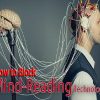How to block Mind-reading technology is advancing rapidly, and the line between science fiction and facts is blurry. Brain-Machine Interfaces (BCI) or Mind Reading Technologies represent one of the most powerful and, simultaneously, dangerous technological accomplishments. The technology is said to revolutionize how we use computers and the world at large and incorporate our thoughts and intents by transforming them into digital signals. Though BCIs show great potential for medical, communication, and assistive technology, they also raise ethical and privacy issues. The concept of a tool that can scan our thoughts and intentions may incite fear and worry, resulting in us identifying ways of safeguarding our privacy and independence. This worry is addressed by this ultimate guide on blocking mind-reading technology and keeping our minds private and confidential in this detailed guide.
Understanding Mind Reading Technology:
There is a need to tap into the workings of these technologies and their challenges in privacy and autonomy first to consider the options for blocking mind-reading technology. This mind-reading device is known as a brain-computer interface (BCI), which decodes brain activity into digital signals that can use to command external devices or to transmit thoughts directly. The devices that often consist of electrodes placed on the scalp or the brain now sense the neural signals generated by the neurons firing in the brain.
The implementations of BCIs are broader and cross different applications such as medicine, communication, and assistive technology. BCIs are one such device to help people with paralysis regain control of their limbs and communicate with others. Additionally, they have been investigated to augment cognitive functions or give a straightforward interface between the brain and the computers, which subsequently allows for more immediate communications.
On the contrary, the fact that we can read thoughts and intentions simultaneously simultaneously raises ethical and privacy issues. Our privacy and perception of our thoughts and emotions can invade with the chance that technology may become more personalized without our consent, creating many fears.
It is a dystopian vision of a future where privacy is a myth. In addition, BCI can use in an undetectable way with the individual’s consent or knowledge.
The Need for Privacy Protection:
The rapid technological advancement, particularly in brain-computer interfaces (BCIs), has presented major ethical issues on privacy and personal autonomy. BCI, similar to mind-reading, can convert brain activity into digital signals and then can control external devices or communicate thoughts directly. Although these devices may change several areas, such as healthcare or communication, they raise ethical and privacy concerns.
One of the critical issues concerning BCI is that it cab use for privacy invasions by accessing the thoughts and intentions of a person without their consent. The fact that such a device can read our minds leads to deep ethical issues of personal freedom and informed consent. Lack of control can lead to massive abuse of this technology that can cause big intrusion into privacy by violating personal liberty and individual rights.
Also, possibly using BCI covertly without involving the person raises additional ethical and legal issues. Abusing these tools can lead to dire consequences for personal autonomy and privacy, even resulting in a dystopian future where privacy is unknown.
A Multi-Faceted Approach:
Protection of one’s thoughts from mind-reading technology encapsulates numerous aspects, namely techno-legal and ethical. These techniques comprise physical barriers, signal jamming, encryption, and countermeasures. It is also vital to keep track of cutting-edge brain-reading technology developments and how they affect privacy and personal freedom.
-
Physical Barriers:
Using physical barriers is a relatively simple means to block mind-reading technology. For instance, headgear such as helmets and hats made of materials that do not let in electromagnetic waves can act as a shield to protect the BCI devices from reading brain signals. Just like frequency jammers, shields, or enclosures, radio frequencies can be effective, too.
-
Signal Jamming:
An alternative is to deploy signal jamming devices to disrupt the communication between BCI and external devices. These jamming devices send electromagnetic signals that interrupt the signals that BCI transfers, so the BCI is disabled.
-
Encryption:
If you do not want anyone else reading your thoughts, you can encrypt your brain signals for protection. Encrypting the thoughts means translating their content into a form only authorized people or devices can read. Although this technology may not prevent the reading of any thoughts by BCIs, it can protect your data from unauthorized access.
-
Mind-Reading Countermeasures:
Some researchers worked on the mechanisms that prevent or confuse BCIs. An instance of this is that the scientists at the University of Washington have devised a “brain hijacking” procedure that could prevent data transfer between BCI and external devices. In addition, researchers at the University of California in Berkeley built a “thought shield” that detects and blocks specific brain signals.
By implementing these methods and ways, people can make efforts to protect their privacy and personal freedom under the march of mind-reading innovations. It is essential to keep up-to-date on the recent advancements of mind-reading technology and its impact on privacy protection and individual liberty.
Conclusion:
Mind-reading technology (brain-computer interfaces (BCIs) raises substantive ethical and privacy questions. As BCIs show enormous potential for medical, communication, and assistive technologies, the idea of a machine that can read our thoughts and intentions without authorization is highly alarming. Since these technologies are fast progressing, we should look for ways to ensure privacy and autonomy.
This guide studied diverse methods and techniques of shutting down mind-reading technology and preserving our thoughts and privacy. Many options exist, such as physical fences and signal disruption to encryption and countermeasures. Nevertheless, the ethics and legality of using these technologies should evaluate, too. The possibility of BCIs should use clandestinely, without the individual informed or giving their consent, raises some serious questions related to personal autonomy and privacy.
Finally, the aim is to harmonize the pros of BCIs and protect personal data. By understanding the present mind-reading technology and its potential implications, we can take measures to preserve our privacy and independence in the presence of evolving technology. It is vital to keep abreast of the ongoing research on mind-reading technology and its privacy and personal liberty implications. By prepare and informed, we can defend our privacy and independence despite the fast advancement of technology.
Visited 24 times, 1 visit(s) today
[mc4wp_form id="5878"]














